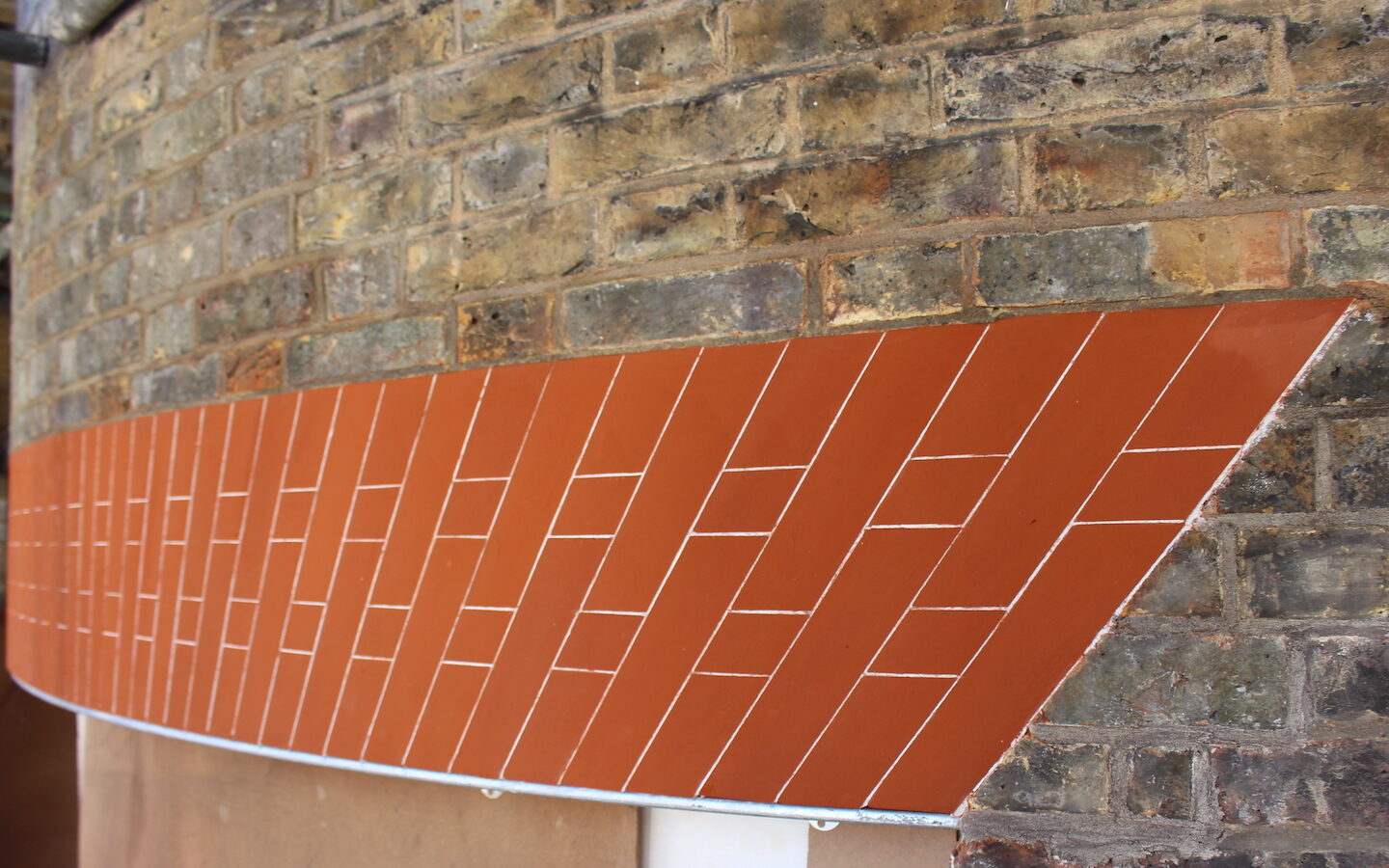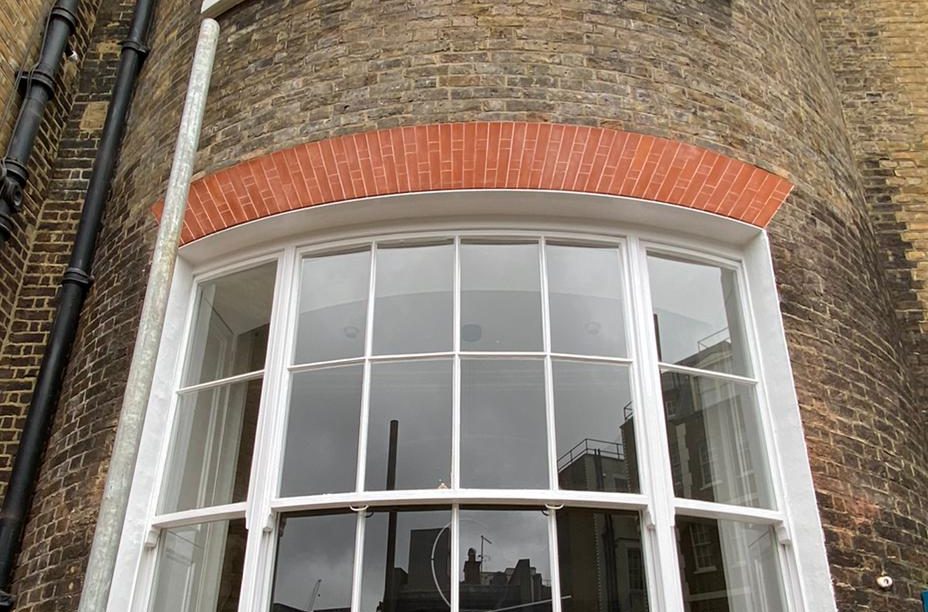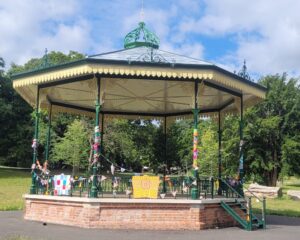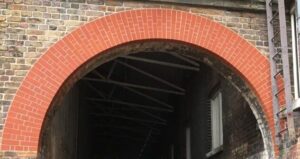Gauged Brickwork
In Georgian and Victorian times teams of bricklayers would specialise in a particular skill, such as gauged work, becoming highly proficient and highly sought after. Gauged brickwork uses a specific high grade brick called a red rubber. These bricks have a softer density that means they can be cut and rubbed after the firing process. This unique feature makes red rubbers the perfect type of brick for ornate detailing and all types of finer work enabling the creation of tight joints which can be as little as 2mm. Once a common skill amongst bricklayers the craft of gauged work is now under threat from brick arch manufacturers who create preformed arches on lintels that can be installed without any detailed knowledge or skill. Whilst it maybe arguably a more cost effective option, the use of preformed arches compromises the integrity of the traditional craft, and the livelihood of those who work within it.
The Georgian Brickwork team are passionate about keeping traditional gauged work skills alive, and one of our most challenging projects in 2020 involved a residential building in Mayfair with a collapsed 3 metre long curved gauged arch. The listed terraced building had been built around 1753 with flat gauged arches above the windows on the front elevation, and another three flat arches on the curved bay windows of the rear elevation. Although overall the brickwork on the building was sound, one of the gauged arches at the rear had fallen from the first floor bay window straight through the conservatory below -thankfully no-one was injured!
Work Undertaken
At the first site meeting to assess the fallen arch, the two arches on the ground and second floors were also reviewed. The ground floor arch was original, however it was in poor condition. The arch on the second floor had been replaced at some point in the building’s history and appeared sound. However, closer inspection revealed that neither arch had a supporting lintel.
The decision was made to replace all three arches and Georgian Brickwork was commissioned to supply and fit the new ones. For smaller projects the Georgian Brickwork team cuts and rubs the bricks inhouse. However, the size of each arch and the difficulties of drawing and cutting the bricks in our workshop resulted in the decision to appoint a specialist brick making company to support us. Lambs Brickmakers were appointed to create detailed drawings of each arch and then rub the voussoirs (the individual bricks) to the specific dimensions. The voussoirs are not interchangeable so each was numbered. Accuracy in the drawings and in the production of the bricks was vital as the joint between each voussoir was only 2mm. Aside from ensuring that all vertical joints were accurate, there was an additional challenge; to create each of the 3m long arches with a curve on plan, to sit exactly on the bespoke lintels that were being installed to support them.
Having successfully got the three arches delivered to site and onto the scaffold the next challenge was to install them. This involved removing enough of the surrounding brickwork to be able to install the lintels. Then Charles and his associate Andrew Dunster installed the arch bricks working from each side towards the middle. The final centre brick (the key brick) completed the arch and provided self-supporting structural stability. This structural integrity is why previous generations of bricklayers were able to build arches without supporting lintels. However construction requirements have moved on considerably since the 18th century!
Following the installation of the remaining two arches, the last stages of the project involved rebuilding the brickwork above each of the arches. Then the area was soot-washed to ensure that the reclaimed yellow London stocks blended in with the surrounding original brickwork. The successful delivery of such a high calibre project in the midst of a pandemic is a testimony to the expertise of those involved and Georgian Brickwork extend their thanks to the professionals they worked with and their commitment to the restoration of this historic property in Mayfair.





